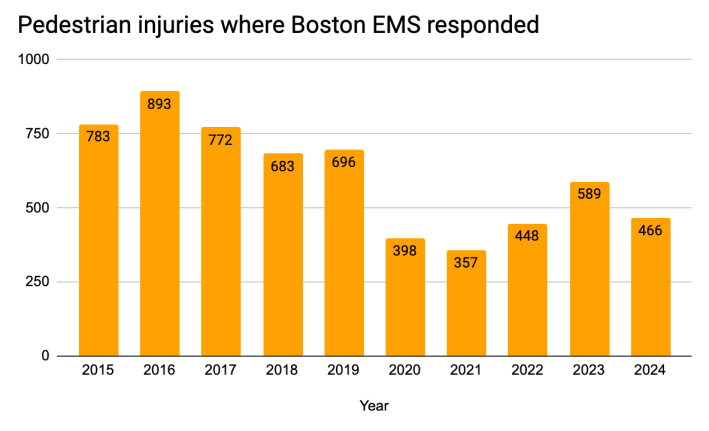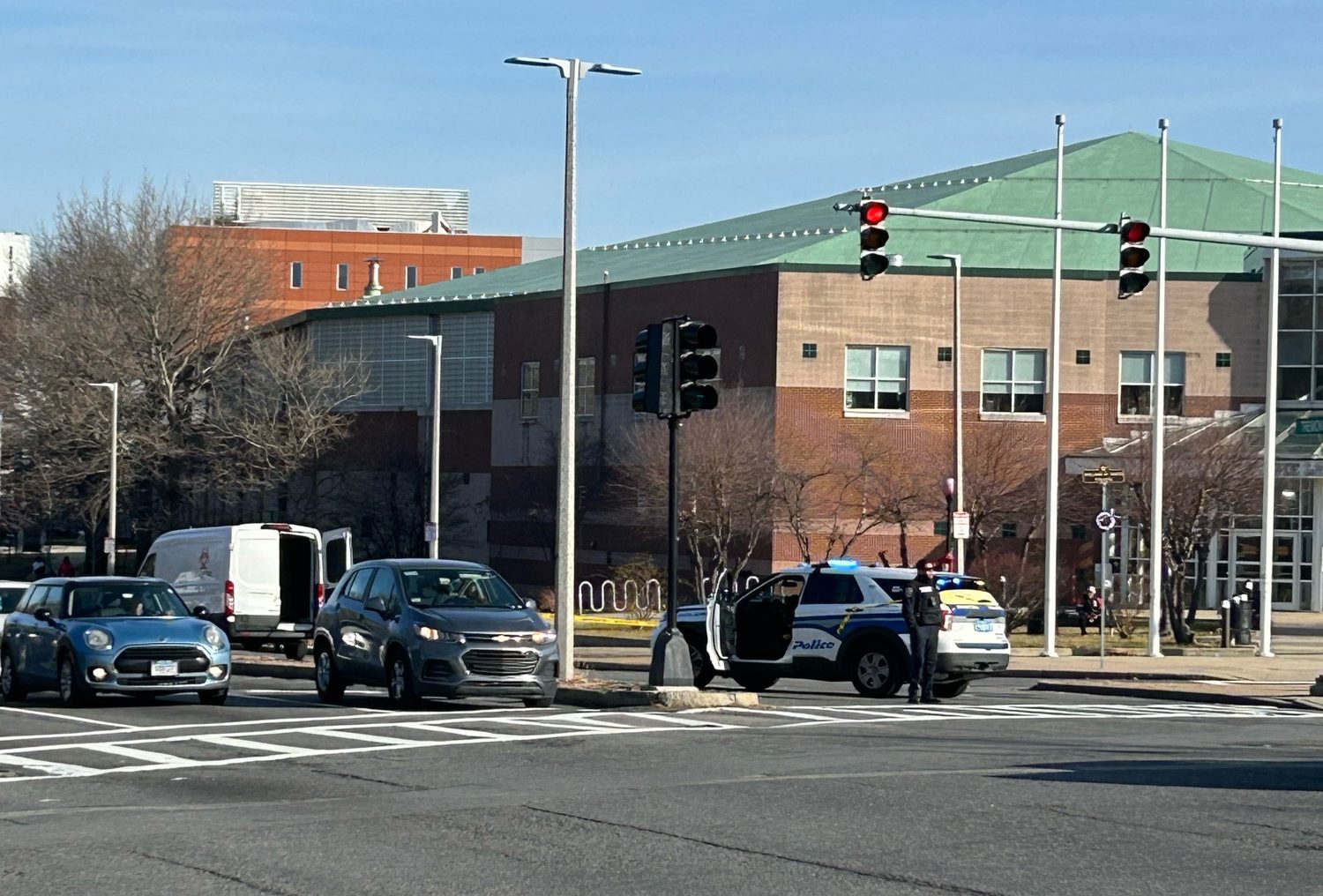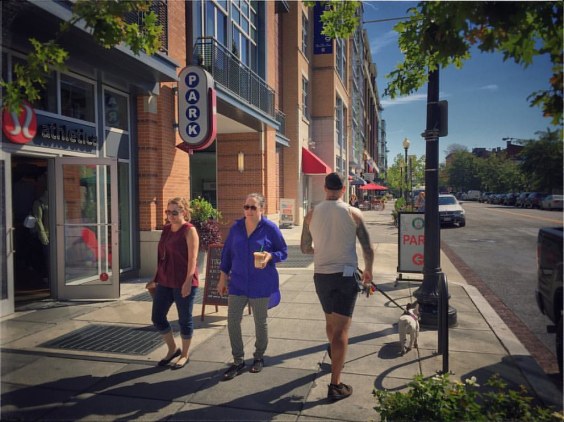An annual WalkMassachusetts survey of fatal crashes finds that pedestrians, older adults, and people of color are disproportionately represented among the hundreds of casualties from traffic violence across the Commonwealth last year.
The organization's newly released Fatal Crashes in MA: 2024 report surveys crash information from MassDOT's Interactive Mapping Portal for Analysis and Crash Tracking (IMPACT) database.
Of the 369 total traffic deaths reported in Massachusetts in 2024, 78 (more than 20 percent) were pedestrians.
More than one-third of those killed were age 65 or older, even though that age group represents less than one-fifth of the total Massachusetts population.
And nearly 70 percent of killings occurred in designated Environmental Justice neighborhoods – that is, neighborhoods with higher rates of non-white, non-English-speaking, or lower-income households.
These neighborhoods include most of the state's urbanized areas, and they're home to just under half of the total population of Massachusetts.
After a decade of 'Vision Zero' policy, Boston's streets remain as dangerous as ever
It has been ten years since the administration of Mayor Marty Walsh committed to a 'Vision Zero' policy with the goal of eliminating fatal and severe traffic crashes in Boston by 2030.
But the total number of deaths and incapacitating injuries that drivers have caused in the City of Boston have been higher in the past two years than they've been in a decade, according to MassDOT's IMPACT data.
Brendan Kearney, the Deputy Director of WalkMassachusetts and the report's primary author, speculates that factors beyond the city's control are undermining local efforts to design safer streets (editor's note: Kearney is also a member of the StreetsblogMASS board of directors).
"It's been a stubborn number. But if the number of fatal crashes is not going down, then more needs to be done," Kearney told StreetsblogMASS. "Maybe the Vision Zero efforts have really only stemmed the tide from the effects of increasing vehicle size over time. We want more details about what kinds of vehicles are involved in these crashes, but that's rarely recorded in crash data."
There is some positive news that's obscured in the total numbers of crashes and injuries.
Many of Boston's Vision Zero infrastructure projects in recent have focused on reducing speeds on residential side streets, and improving streets with lots of foot traffic to mitigate risks to pedestrians.

Those efforts to seem to be bearing some results: city data indicate that the number of EMS calls for pedestrians who have been hit by a car have been gradually declining over the past decade (see chart at right).
Brockton, Springfield rank as the Commonwealth's most dangerous cities per-capita
Along with Boston, WalkMassachusetts says that two much smaller cities deserve scrutiny for having at least three pedestrian deaths in each of the four years they've released this report, since 2021.
Springfield, with less than one-quarter the population of Boston, and about one-third as much land area, had at least 13 traffic fatalities in 2024, including at least 4 pedestrian killings.
Brockton has less than one-sixth as many people as Boston, but it also had four pedestrian killings in 2024.
Among the victims of Springfield's dangerous streets last year were Kristine Andrews, a 36-year-old mother, who died in September.
Hampden County prosecutors allege that a teen driver was street racing at speeds approaching 70 miles per hour on State Street, the most dangerous roadway in Massachusetts, when he struck Andrews so forcefully that her body was cast into the air and impaled on the cast-iron fence of St. Michael's Cemetery.
And in Brockton, another driver used his vehicle to strike and kill lifelong resident Stuart Smith, aged 50, on Main Street in April.
Prosecutors allege that Smith's killing was done with intent and is therefore a murder – a detail that ironically could erase Smith's killing from the government's crash reporting databases.
According to WalkMassachusetts, the federal government's Fatality Analysis Reporting System (FARS) does not count fatal crashes that are considered to be suicides or murders – a distinction that relies on the criminal-legal system's subjective judgements of the driver's intent.
"Crashes where drivers use a vehicle as a weapon, especially those that result in injury or death, should be tracked and shared along with other roadway safety data," argues WalkMassachusetts. "This information is relevant for transportation and can lead to creating safety policies to protect people using our streets and sidewalks."






